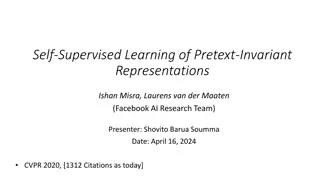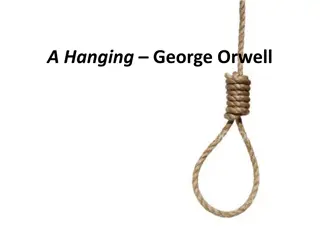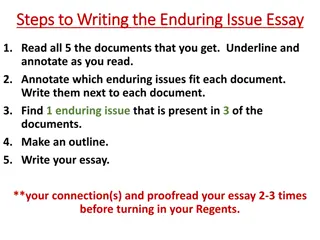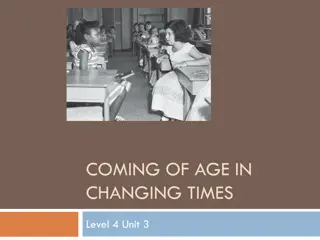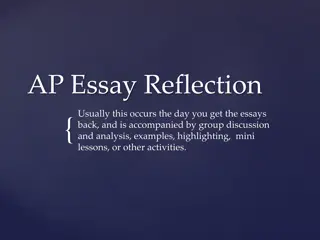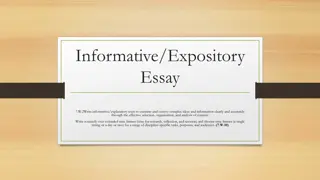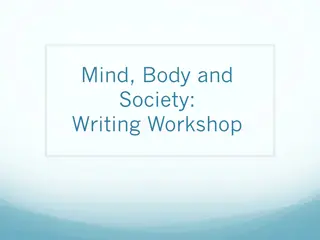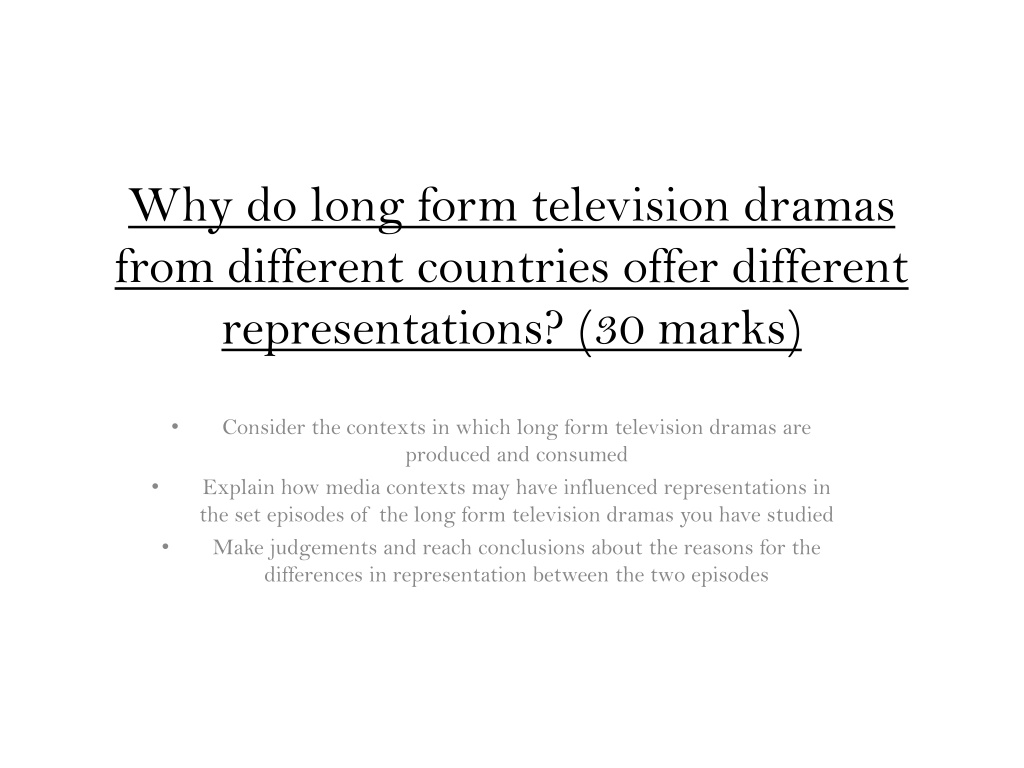
Cultural Influences on Television Drama Representations
Explore the diverse representations in long-form television dramas from different countries, considering social, gender, cultural, political, economic, and historical contexts. Examine how media contexts shape the portrayal of families and societal norms, evident in episodes like "The Donna Reed Show" (1958) and "Modern Family" (2013), showcasing shifts in gender roles and family dynamics over time.
Download Presentation

Please find below an Image/Link to download the presentation.
The content on the website is provided AS IS for your information and personal use only. It may not be sold, licensed, or shared on other websites without obtaining consent from the author. Download presentation by click this link. If you encounter any issues during the download, it is possible that the publisher has removed the file from their server.
E N D
Presentation Transcript
Why do long form television dramas from different countries offer different representations? (30 marks) Consider the contexts in which long form television dramas are produced and consumed Explain how media contexts may have influenced representations in the set episodes of the long form television dramas you have studied Make judgements and reach conclusions about the reasons for the differences in representation between the two episodes
Ideas: Social context Gender context Cultural context Political context Economic context Historical context
Social contexts Knowledge and understanding of the influence of changes in gender roles, of gender, racial and ethnic inequalities, social attitudes to sexualities on television programmes. Knowledge and understanding of the influence of social anxieties and/or contested (challenged/disputed) social values on TV programmes, for example the perceived rupturing of the American dream illustrated through allegoric (symbolic) representations of social anxieties such as domestic terrorism and surveillance and also more broadly through wider western social values towards security and family and home and the perceived breakdown of the nuclear family.
How has the representation of the American family changed on U.S. television? The Donna Reed Show, 1958 Represented to be a nuclear family as they have a nice house, nice clothes etc. Gender roles shown as the woman seems to be staying home and catering for the family Man going to work Modern Family, 2013 Sexuality: gay couple shown (gender) Social roles: 2 men raising a child The representation of the American family has changed over time by the difference in social roles within the family. For example, in The Donna Reed Show (1958), Donna is shown to be a stay at home mother who caters for the family and is devoted to her husband. A stereotypical house wife. Whereas in Modern Family (2013), the social roles of the family have changed and sexuality and gender roles are shown to be entirely different- two men raising a child with an openly gay attitude. Also, representation of the typical couple is disrupted as an older man is shown to be with a foreign women who is significantly younger than him. Outspoken women were more frequent in Modern Family compared to The Donna Reed Show. TDRS is very innocent and touches on nothing that would be seen as controversial at the time, whereas in MF, controversial issues are touched upon in a humour manner.
Cultural contexts Knowledge and understanding of the influence of national cultures on TV programmes, for example the cultural importance of television dramas in reflecting, reinterpreting and re-enforcing national cultural identities and representations of social groups, events and the individuals within those (and on occasion, challenging and subverting those representations to try and instigate cultural change and domestic conversations on representations and identity). Knowledge and understanding of the influence of cultural globalisation and hybridisation (media convergence) on TV programmes and recognition that key character types may share certain generic traits in their representations across westernised television culture.
How is British culture represented in Blackadder ? British sense of humour: sarcasm, slapstick? Critical of ourselves Class: general in highest class, clear division between the classes e.g. general never wanted to go and fight. Dialect emphasised in the higher class. Our view on our own history: not much faith in our armies and leaders as we always do the same thing and never learn from our mistakes e.g. when they joke about how every time they go out to fight, most people end up dying in the first 10 minutes as they never change their battle plan Our take on our leaders (the General): not much help in battle field situations, snobs, cowardly, not taken seriously, behave stupidly, responsible for their troops and this was not executed to the best of their army s ability as the general didn t really care.
Political contexts Knowledge and understanding of the influence of attitudes to politics on television programmes including how TV programmes can reflect, reinterpret, amplify and satirise (criticise by ridicule and mockery) national political institutions and the mechanics of their working, including an understanding that western programme makers have the freedom to criticise and satirise their own domestic politicians and political systems. A knowledge and understanding of the need for the audience to have political knowledge itself to understand the basis of some representations in political dramas.
What do we as an audience have to be aware of to understand this clip? What are the anxieties being portrayed here? What/who is being criticised? Black-ish: The anxieties of the people involve people of colour, specifically black people, fearing police brutality (due to their race). Teaching their children how to be safe when facing the police is the main anxiety of the mother, yet the main anxiety of the father is realism as he wants his children to know and live in the real world where POC are mistreated. The government and the police system are criticised for being rigged against black people The audience have to be aware of the prejudice against POC in America and how the police have wrongfully killed POC in the past. The Black Lives Matter movement is important in this clip. Praised Obama for being the change America needed and they have now back tracked because of Trump s presidency.
Historical contexts Knowledge and understanding of the influence of key historical events on television programmes, for example, 9/11 and the war on terror and how this affected the American psyche (the forces that influence, thought, behaviour and personality) and been reflected and reinterpreted through television drama; for example, how the unification of Germany influenced the region and has been reflected and re-interpreted through television dramas.
How do you think the Walking Dead might have been influenced by modern American history? Specifically 9/11 and the war on terror . The zombies could represent terrorists The police man could represent the government He's a true American man, he is a force of good in the zombie ridden world. He always has his firearm- typical American feature that has caused a lot of trouble in modern American history.
Economic contexts Knowledge and understanding of the influence on high budgets on flagship TV programmes, e.g. the opportunities for character development in authored (quality, renowned writers) high budget programmes allows for more complex, individualised, 3-D characterisation rather than stereotyping. Responses may also show knowledge of the disparity (difference) between production budgets for US TV dramas and European TV dramas and their sources of funding and how budget can influence representations through allowing more or less choice to programme makers when constructing representations, for example, with regard to locations, settings, costumes, filming, lighting, sound and editing technology.
How is the teleporting scene portrayed in Misfits? (less than $400,000 per episode) How is the battle portrayed in GOT ? ($15 million per episode) What are the advantages of having a bigger budget? Misfits: Uses camera angles to portray teleportation - very basic editing, simple setting, similar costumes, natural lighting from windows, no special effect makeup, simple sound editing, no special effects. GOT: lots of intricate props, vaguely simple location but setting is extreme, lots of special effects e.g. the dragon, similar costumes but more detailed, natural lighting as they are outside, sound track/advanced sounds playing in the background, lots of actor/actresses/extras used. Lots more creative freedom, for example, special effects and more effective sound can be used, more actors and actresses can be hired for more authentic scenes, costumes can be better designed and created to specifically suit the individual characters, scenes can be more exciting due to the bigger budget meaning that test shoots can be completed to ensure more dangerous and exciting scenes that will entice more viewers.
Notes on how you could apply each of these contexts to Deutschland 83 and Stranger Things, referencing specific examples from the first episode of each:
Why do long form television dramas from different countries offer different representations? Social context: role of men, role of women, the different styles of family e.g. nuclear family or unconventional family. The episode shows the influence and the cultural effects of the American small town community. This is shown through their resistance to government control and their short term effects on America as a community despite their lack of social influence.
Plan Social context ST- Nuclear family (Mike), unconventional family dynamic (Will). Only one POC, Includes on person with a disability- Bullied. Men Mikes dad=Classic, typical American policeman, Male teens are average and not out of ordinary. Women- Single mother (Joyce) , Classic mother (Mikes Mother),typical teen Nancy, but shows her development. Eleven is unique, outcast doesn't fit into any typical convention. Deutschland 83- Martin provides for family- Father figure absent, His aunt has a key job and role , is shown to be stern which subverts stereotypes of the time where women wouldn t have such key roles. General Edel has a women secretary, and all the soldiers are white. One black American general.
Cultural context: ST- Music, costumes etc 80s references. Duetschland 83- Difference between east and west , political tensions e.g.

